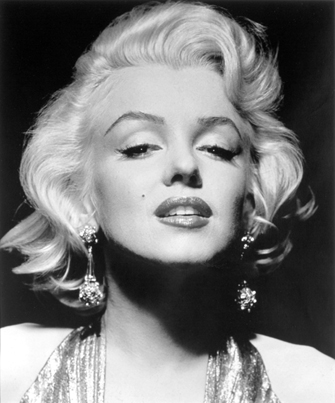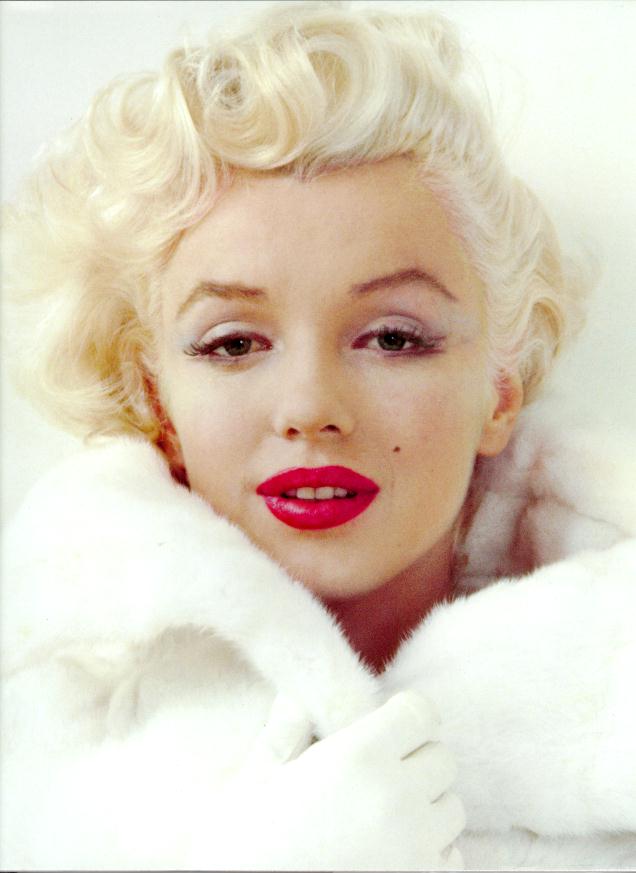She comes to us on a first-name basis. She has to because we are as intimate as lovers. We’ve never met, we’ve not even spoken over the phone. But every shadow that crossed her face was something we recognised and made our own. Her beauty? Unsurpassed. Her vulnerability? Depthless. Her first name? Marilyn.
Except, of course, it’s not. Norma Jean was one of those sad American stories that began with childhood abuse and ended through adult abuse at the hands of Lotharios no less than the President of the United States. Although no one knows whether her death was suicide or murder, everyone knows her downward spiral became turbocharged after John F Kennedy stepped into the camera frame.
There are so many sad stories, of course. So how is it that hers, like Elvis, like the Titanic, like Hiroshima, like Auschwitz , has never slipped from the public consciousness? I think it was, above all else, that incomparable face. If she had looked like Joan Crawford or Bette Davis, I don’t think we would have cared that she died infamous, young, talent almost unsung.
It was a remarkable talent but it could have been easily sidelined. I quote an apocryphal comment attributed to Sir Lawrence Olivier: “She can’t sing, she can’t dance, she can’t act, but what can you do, the camera loves her.” During ‘The Prince and the Showgirl’, Olivier got a taste of what it was like working with someone who was always late, had difficulty learning her lines and was what he called “a professional amateur”. Which was better than Tony Curtis who after ‘Some Like it Hot‘ said she was mean and kissing her was “like kissing Hitler”.
That duality she evoked in others came from deep within. She fought herself in many ways. Being in the hard drama ‘The Misfits‘ when she owed her fame to playing the ditzy blonde, marrying playwright Arthur Miller when Marlon Brando was at hand, calling her lovers ‘Daddy’, her wit (Question: “What do you wear in bed, Marilyn?” Answer: “Chanel No 5”) when people took it for granted she was dumb (didn’t she have the body to prove it?), were all powered by a deep-seated neurosis. That was what made her late on sets, or had her flub her lines. She was, quite simply, terrified of not being good enough. The child of foster homes with a mad mother – who could blame her? She needed a justification for her existence and she thought she would find it through the movies and the adulation of the masses.
If Caligula could have been manifested as a non-human entity, his name would have been Hollywood; movie studios in those days treated actors like cattle, branding them whichever way they thought fit. Marilyn’s tragedy was that for a long time she agreed with what they told her she was. But the worm will turn, and by the time she was in her 30s, she wanted more, like any self-respecting siren would. She had more in her, she was smart and a survivor, but the day she swallowed too many pills she must have forgotten all her hard-learned lessons. It happens.
She only had a 10-year window of fame but that fame has lasted a number of lifetimes. We are all familiar with the iconic Warhol print of her face and the pink gown she wore when singing ‘Diamonds are a Girl’s Best Friend‘. This one-name wonder still has movies made about her (My Week with Marilyn) in the same year, 2011, that Vanity Fair used her on the cover for the story ‘Marilyn’s Secret Diaries’.
Her best films were ‘Gentlemen Prefer Blondes’, ‘How to Marry a Millionaire’ and ‘The Seven-Year Itch‘, all made in the early 50s. By 1962 she was dead, after ‘The Misfits’ and drunkenly, breathily singing “Happy Birthday, Mr Pre-si-dent” in a gold lame dress she had to be sewn into. She obviously bartered her sexuality for recognition of her Self (it was like she was pleading ‘Somebody, please see me’), but from photos taken during ‘The Misfits‘, she probably couldn’t see herself anymore because she didn’t look like Marilyn anymore. She looked jaded, her hair more white than gold, a thousand yard stare already filming her eyes. But. When Bert Stern photographed her for Vogue six weeks before she died, she gave him images that sealed his career in what has come to be called The Last Sitting. It was like The Last Supper, with Bert worshipping at the feast where Marilyn presided, knowing that time was on a leash but about to break away. In the years to follow, we would all be Bert.
In that last sitting, she looked older, sure, but her loveliness was rich, and her personality bubbling like a 16-year-old. She seemed to be sharing a wink and a nod with you, the viewer. She wasn’t taking herself seriously. She was having fun and giving us what we wanted at the same time.
If she were alive today, would we still have mourned? No doubt. She would have had various ailments and her beauty would have become monolithic rather than monumental. Her lovers would have left and sold their stories to the tabloids. She would have dithered along on Valium and Gin and we would have had to watch her fading like a spluttering candle in the wind instead of disappearing from our sight in a blaze of romance, tragedy and unfulfilled desires, both hers and our own.
Here’s a confession to mark her 50th death anniversary: I am a committed heterosexual but but I sleep every night under a series of Marilyn prints which hang on my bedroom wall. I got these prints decades ago and I admire them every so often..because it reminds me of what is possible from the human race. And when, before I sleep, I mumble something on the lines of “my soul to keep”, I hope someone’s got hers and is keeping it tight. I think that’s all she ever wanted.
Sheba Thayil is a journalist and writer. She was born in Bombay, brought up in Hong Kong, and exiled to Bangalore. While editing, writing and working in varied places like The Economic Times, Gulf Daily News, New Indian ExpressandCosmopolitan, it is the movies and books, she says, that have always sustained her. She blogs at http://shebathayil.blogspot.com/







